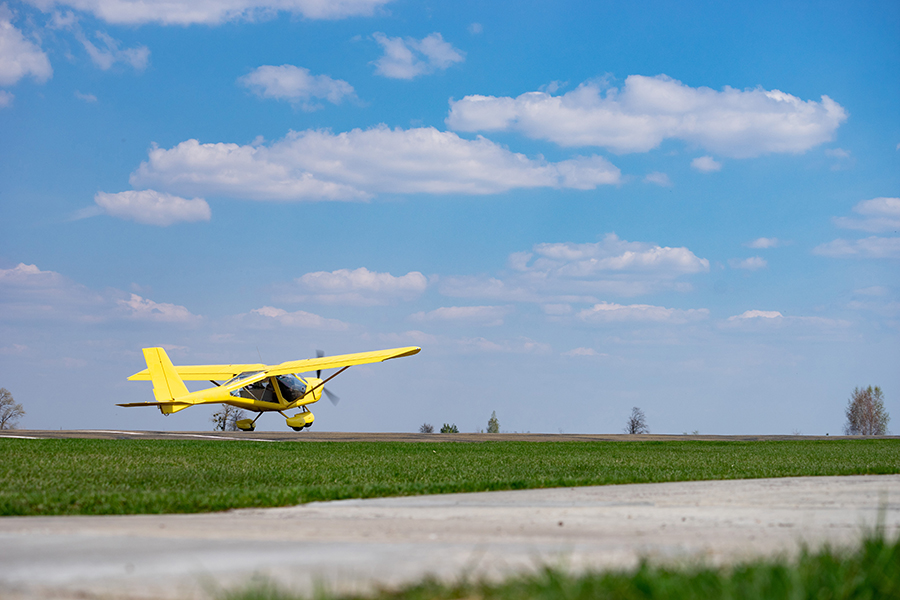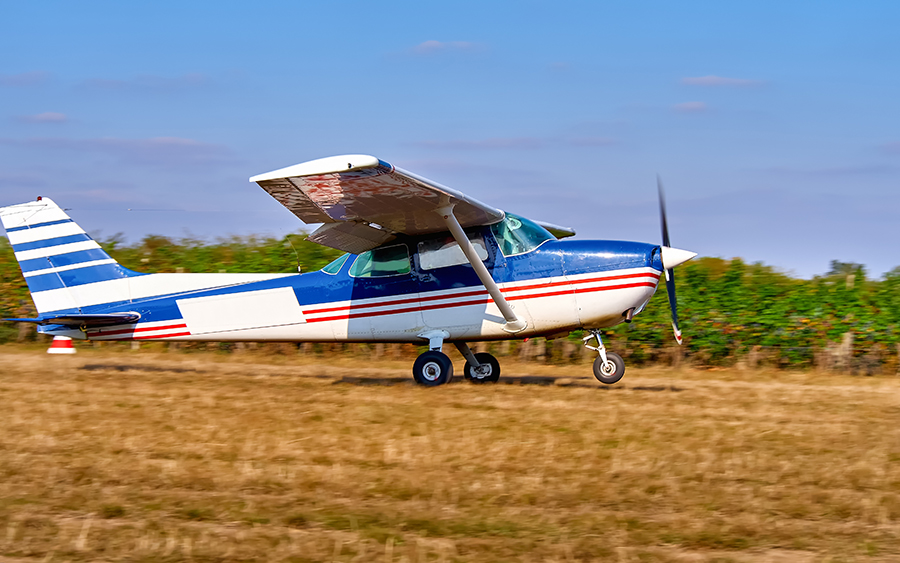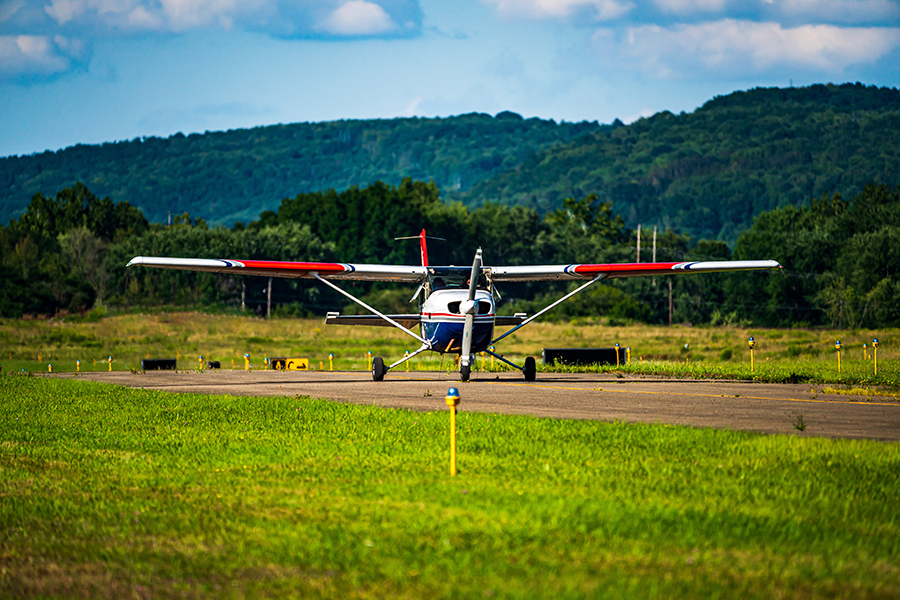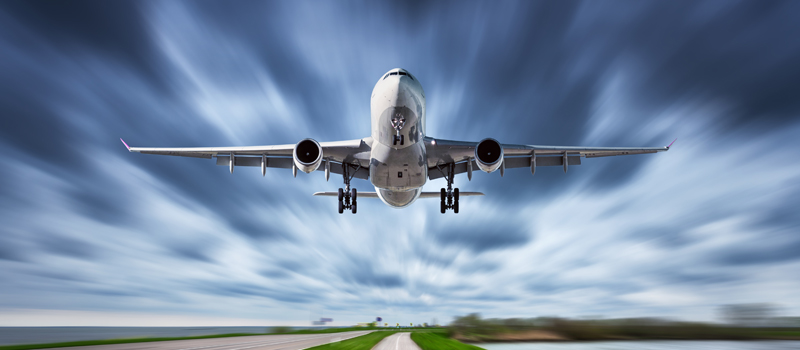-
What Are "Soft-Fields"?
-
What Are Soft-Field Procedures?
-
Are Soft-Field Takeoffs and Landings Dangerous?
-
Soft-Field Inspection Procedure
- Check NOTAMs
- Be Extra Cautious of Grass Runways
- Monitor the Radio
- Do a Runway Inspection
- Perform a "Light" Touch-And-Go
-
Soft-Field Taxi Procedure
-
Soft-Field Takeoff Procedure
- Step 1 - Soft-Field Takeoff Roll
- Step 2 - Soft-Field Lift Off
- Step 3 - Soft-Field Climb
- Common Errors
-
Soft-Field Landing Procedure
- Soft-Field Landing Flap Settings
- Soft-Field Landing Approach Speed
- Braking on Soft-Fields
- Common Errors
-
Conclusion
Have you attempted a soft-field takeoff or landing recently? If not, the last time was likely on your initial check ride or previous flight review. Like many others, you may feel rusty attempting these procedures again.
Knowing how to safely take off and land on unpaved surfaces is essential. Soft-field runways are commonly used for aircraft operations in remote places or where construction of a paved surface may be impractical or too costly. Additionally, paved runways can be found in varying degrees of serviceability, and soft-field landings and takeoffs can be used to mitigate potential damage to the landing gear from less-than-ideal paved surfaces.
This article will cover everything you need to know about soft field operations so that you can practice them comfortably and execute them confidently in real life.
What Are “Soft-Fields”?
Soft-fields range in complexity, from straightforward grass runways to unprepared muddy fields. There is no fixed definition of a “soft-field,” and soft-field landing procedures are sometimes used on hard runways (when there is a significant amount of water present, for example).
As a general definition, consider any landing surface that doesn’t have a hard surface (e.g., asphalt) as a “soft field.”
Examples of soft fields include:
- Grass runways
- Snow runways
- Gravel runways
- Sand runways
The term “rough-field” is often used interchangeably with “soft-field.”
What Are Soft-Field Procedures?
The FAA Practical Test Standard (PTS) for the private pilot certificate requires that students display an understanding of soft-field takeoffs and landings, as well as carry out these procedures. It seems, however, that most instructors teach short-field operations more frequently than soft-field takeoffs and landings. Some examiners hardly consider soft-field takeoffs and landings to be much different from normal operations.
Despite appearing similar, there are significant differences between normal and soft-field operations. It is mandatory for all sport, private, and commercial pilots to receive training on soft-field takeoff and landing techniques. However, most students never get to experience actual soft-field conditions. The procedure is usually taught on hard runways just well enough to pass the requirements of the check-ride. Unfortunately, this can lead to an unexpected incident when pilots with little actual soft-field experience attempt to operate out of soft-field runways.
During a soft-field landing, the runway is typically wet or soggy, which increases the chance of hydroplaning. The aircraft will also have a greater tendency to “dig” into a soft-field surface, which may cause damage to the landing gear and could even cause a prop strike or a complete flip onto the aircraft’s back. As such, pilots must allow the landing gear to be supported by the lift from the wings for as long as possible in order to reduce stress on the landing gear and minimize the chance of hydroplaning or drag from the surface.
Are Soft-Field Takeoffs and Landings Dangerous?

Soft-field landings and takeoffs are not inherently dangerous. As long as you understand the procedure for operating on a soft surface, it can be executed safely. However, failing to account for several key differences between normal and soft-field operations can pose a risk of harm or accident.
This is why it’s essential to have proper instruction and practice time before attempting actual soft-field operations. You will need practice judging what a serviceable vs. unserviceable field looks like. Convince your instructor to take you on a lesson to an airport with an actual “soft-field.”
Soft-Field Inspection Procedure
A great soft-field takeoff or landing begins far before the takeoff or landing procedure is initiated. The nature of a soft-field lends itself to poor and sometimes unserviceable runway conditions. Your responsibility as the pilot is to ensure that the runway is conducive to a safe landing or takeoff before beginning the soft-field takeoff or landing procedure.
So, how can you ensure that the runway is usable? Here are a few tips.
Check NOTAMs
Check for NOTAMs (Notices to Airmen) at your destination airport before leaving for the trip. You may find reports on the condition of the runway and whether the runway is still open. The status of runways nearby will also provide you with an idea of what to expect at your destination. If there has been recent precipitation, it can make conditions dangerous on a soft field, so pay attention to weather trends early on.
Call ahead and speak with the airport manager, FBO, or a local pilot to find out more about the runway you’re planning to land on. If you’re going to be landing on a grass runway, remember to ask when it was last mowed.
Be Extra Cautious of Grass Runways

A well-cut, dry grass runway is ideal for landing, but bad weather or a lack of mowing can make conditions on the runway difficult for landing or takeoff.
Grass runways can be particularly slippery when taking off or landing, especially in wet weather conditions. The combination of moisture and the smooth blades of grass can create a very slick runway, which can lead to slipping and loss of control. Pilots must be extra cautious when landing or taking off on a grass runway and ensure that the conditions are sufficient for takeoff or landing and that the runway is long enough for a soft-field takeoff or landing.
Monitor the Radio
Before you arrive at your destination, monitor the relevant frequency for updates about the runway conditions. If other pilots are using it, they might be able to give you a report.
If the airport has an automated weather station, such as a Remote Automated Weather Station (RAWS) or an Automatic Terminal Information System (ATIS), these can provide valuable real-time information about visibility and runway conditions.
Do a Runway Inspection
Performing a runway inspection is by far the best way to judge the condition of a soft-field runway.
During a runway inspection, check for the following:
- Holes
- Stones
- Height of grass.
- Wet or dry mud. Wet mud is generally less favorable, but dry mud may break on impact or cover a layer of wet mud.
- Snow, and ice in particular.
- Water that has pooled in one area (known as “standing water”)
- Misplaced equipment or other runway obstructions
- Wind strength and direction
- Animals
If you’re on the ground, perform a visual inspection by walking onto the runway when safe. You should monitor the relevant frequency before entering any active runway, no matter how remote.
Observe the condition of the entire runway, paying particular attention to the surface integrity and particularly unfavorable areas. If the runway does not look good enough for departure, delay or cancel the flight.
If you’re in the air and a soft-field runway is your destination, you may have to perform a low pass to judge the runway conditions accurately.
To execute a low pass (also known as a “low-level inspection”) safely, follow a typical traffic pattern and then increase power during your flare just enough to remain a few feet off the ground. Keep your height a few feet off the ground as you would during a soft-field takeoff, thereby remaining in ground effect. Full flaps will allow you to reduce your speed to a minimum while remaining stable.
Perform a “Light” Touch-And-Go
If you still have concerns about the conditions, opting for a quick touch-and-go landing may be best. Some pilots use this opportunity to lightly touch down on the runway and get a feel for the runway conditions.
To do this, keep a little power during the round out, flare, and touchdown, and let your wheels briefly (and softly) touch the ground. If you see water or mud spraying up or your wheels start to sink, it might be best to find another spot to land.
If you want to try this, be careful not to bring your wheels down too hard, as it will create a significant amount of drag on the undercarriage. You can avoid an unintentional landing by keeping your speed up.
Soft-Field Taxi Procedure
Similar to the takeoff and landing procedure, you should attempt to keep the aircraft’s weight off the wheels when taxiing on a soft or rough field.
In a tricycle gear aircraft, and depending on the severity of the wind, you should attempt to keep full back pressure on the control column during taxi to ensure maximum ground clearance for the front propellor and to keep the weight off of the nose wheel, as it is the most likely to dig into the surface.
When initiating a taxi on a soft field, you will likely require more power than usual to begin rolling and more power to maintain speed.
Soft-Field Takeoff Procedure

Operational techniques for takeoffs and climbs from soft-fields are designed to help the airplane become airborne as quickly as possible, eliminating drag caused by tall obstacles like grass, sand, mud, and snow on the surface.
If the pilot uses conventional takeoff techniques on a soft-field, the takeoff will be impeded by the soft surface, tall grass, or wet grass. Such obstacles reduce the plane’s ability to gain speed during its initial acceleration phase. Pilots should be aware that the takeoff procedure for soft fields is quite different from the takeoff procedure used for short fields with firm, smooth surfaces.
The optimal technique during takeoffs from soft or uneven surfaces is for the pilot to transfer the airplane’s weight from the wheels to the wings as soon as possible. The pilot should do this by maintaining a high Angle of Attack (i.e., nose-high pitch attitude) as early as possible during the takeoff roll. Flaps should also be used, if practicable, to provide additional lift at low speeds, allowing the aircraft to shift its weight from the wheels to the wings earlier compared to a flapless takeoff.
Step 1 – Soft-Field Takeoff Roll
While lining up for takeoff, the pilot should avoid stopping on the runway and instead continue directly into the takeoff roll to avoid getting stuck on a soft surface like mud or snow.
The pilot should smoothly apply takeoff power when the airplane is aligned with the takeoff path. As the aircraft accelerates, the pilot should apply enough back pressure on the control column to reduce the weight supported by the nose wheel.
The airplane’s wings relieve the weight on the wheels as speed and lift increase during takeoff, which then minimizes surface drag caused by the soft or rough field. If this attitude is accurately maintained, the airplane virtually flies itself off the ground, becoming airborne but at an airspeed slower than a safe climb speed because of the ground effect. If this attitude is maintained, the nose wheel will lift off first, and the main gear will follow afterward.
Step 2 – Soft-Field Lift Off
This technique will cause the aircraft to lift off below safe climb speed (Vx or Vy). The aircraft must, therefore, be kept in ground effect until a safe climb speed is obtained.
After the airplane lifts off, the pilot should lower the nose to accelerate to a safe climb speed. The pilot should expect the aircraft to sink back down to the ground when transitioning out of ground effect, even though they have full power applied.
Before continuing the climb and transitioning out of ground effect, the airplane must remain in ground effect until at least Vx is reached, and preferably Vy if obstacles and takeoff distance allow. This requires a deep understanding of the control pressures needed to maintain a stable altitude during acceleration, how the aircraft will respond to those inputs, and the visual cues available during the procedure.
Step 3 – Soft-Field Climb
After the airplane has reached Vy and a positive climb is established, the pilot should retract the landing gear and flaps if equipped. If there is wet snow or slush on the surface the pilot is taking off from, the pilot should not retract the gear right away so that any moisture can air dry.
If an obstacle is present after taking off on a soft field, the pilot should climb at Vx until the obstacle has been cleared and only accelerate to Vy afterward.
Common Errors
Here are the most common errors made during soft-field takeoffs:
- Not checking the airplane’s handbook and performance charts before takeoff.
- Not enough back-elevator pressure during the takeoff roll resulting in inadequate pitch attitude.
- Not verifying engine instrument indications when applying engine power.
- Poor directional control.
- Climbing too high and inadvertently leaving ground effect.
- Excessive or sudden elevator control while trying to level off and speed up after takeoff.
- Inadvertently allowing the airplane to descend slightly and touch down on the runway immediately after taking off.
- Trying to climb too soon with insufficient speed.
- Underestimating the increase in pitch attitude required as the airplane leaves the ground effect.
Soft-Field Landing Procedure

When landing on a soft-field surface, the goal is to touch down as smoothly as possible at the slowest possible speed.
The approach used for landing on a soft field is similar to the normal procedure for long, firm landing areas.
The main distinction between the two is that during a soft-field landing, the airplane remains 1 to 2 feet off the ground in the ground effect for as long as possible. This allows for a slower loss of speed (and lift) so that the wheels can touch down softly at the lowest speed possible.
This technique helps to avoid the sudden increase in nose-over forces that can happen when an airplane touches down. Power is continuously used from the level-off until touchdown, and the aircraft is flown slowly onto the ground with the weight supported by wings. It is only after touchdown that power is gradually reduced to the amount required for the taxi.
Soft-Field Landing Flap Settings
Flaps help pilots touch down at lower speeds during soft-field landings, so it’s recommended to use them whenever possible.
The flaps on low-wing airplanes are, however, susceptible to damage by materials such as mud, stones, or slush that get kicked up by the wheels. Retracting flaps during the after-landing roll is generally not a good idea. This is because the need for flap retraction (i.e., reducing the landing roll) is less important than maintaining full control of the airplane.
Soft-Field Landing Approach Speed
The same speeds used for short-field landings can be used for soft-field landings. If you use a higher approach speed, you may experience too much float when in the ground effect, which will significantly increase the landing distance.
A normal descent angle should be used if there are no obstacles on the final approach.
Braking on Soft-Fields
Avoid using brakes on a soft field, as this may cause the nose gear to dig into the landing surface and impose a heavy load on it. The soft or rough landing surface will effectively reduce the airplane’s forward speed. If you land on a very soft field, you will likely need to add power to keep the aircraft from becoming stuck during the landing roll and taxi.
Common Errors
Here are the most common errors made during soft-field approaches and landings:
- Excessive rate of descent
- Excessive airspeed during approach
- General unstable approach
- Rounding out too high (i.e., not compensating for the increased power)
- Incorrect power management during round out, flare, and after touchdown
- Heavy touchdown
- Letting the nose wheel “fall” to the runway on its own after landing rather than controlling its descent
Conclusion
Soft-field landings and takeoffs require more planning and skill than normal operations. It is essential to understand the airplane’s performance limitations and its specific characteristics for operation on soft surfaces.
Soft-field takeoffs and landings can be tricky, and practicing these procedures before trying them in real life is important. The best way to learn is by doing, so ensure you get plenty of practice in a safe environment.



